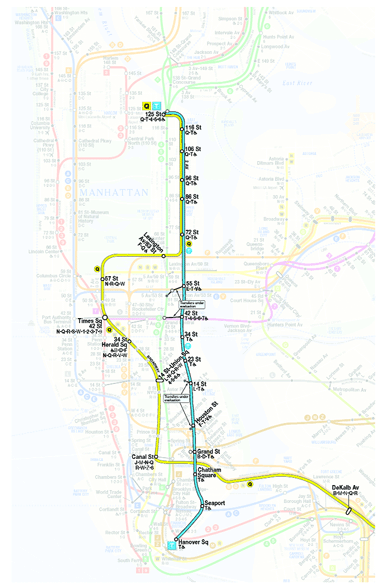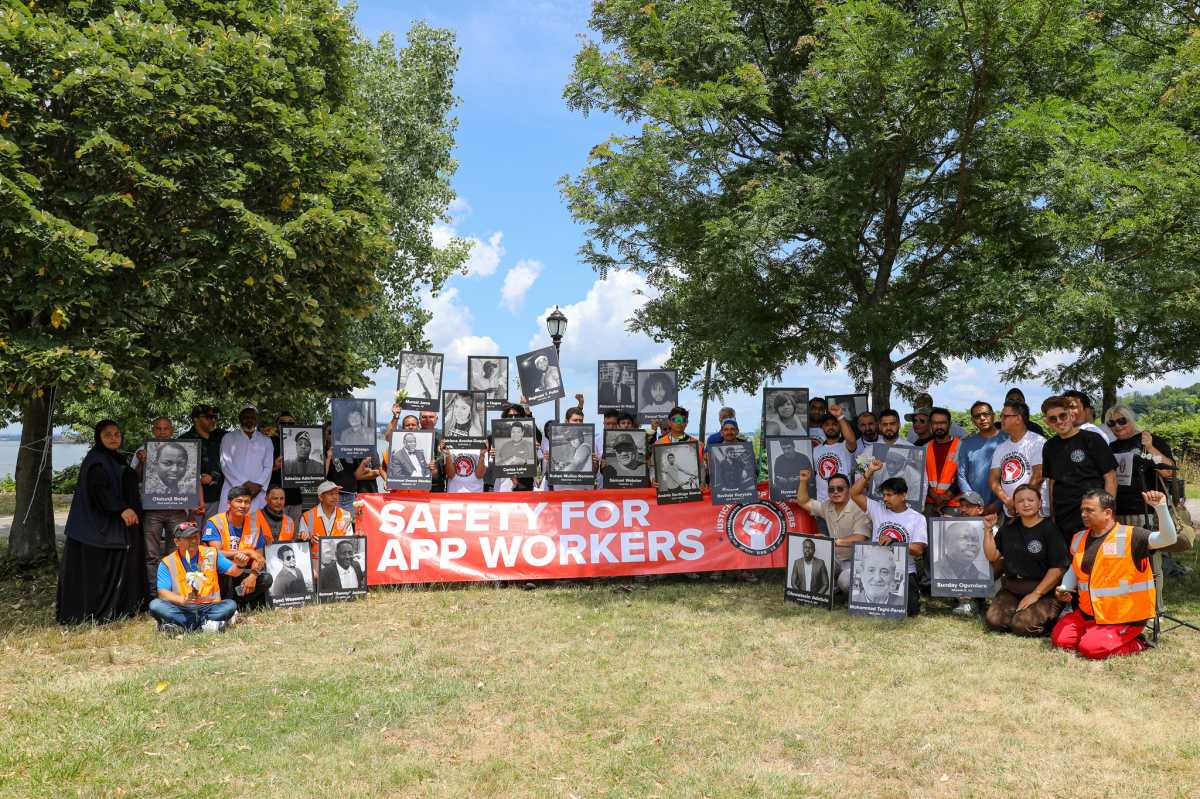By Josh Rogers
"If the seventh decade proves to be the charm and fruitful work on the Second Ave. subway actually begins soon, Downtowners will get new services in the first phase of the project and will not have to wait yet another decade or two before they see any benefits."
The Metropolitan Transportation Authority cleared a hurdle in Washington D.C. this week and hopes to resume the long-delayed project by the end of this year or early next year. The M.T.A. gave up the idea of building a scaled down version of the line just on the Upper East Side some time ago, but after that decision was changed, officials continued to say those stops would be built first and were relatively quiet about the Downtown component of the first phase.
The M.T.A. hopes to finish the first phase in 2012 and it will allow Upper East Side commuters (at 96th, 86th or 72nd Sts.) to get on an expanded Q-line which will follow the current Q route down to Canal St. and on to Brooklyn. The trip to Lower Manhattan is likely to be faster on the Q’s Broadway line than the full Second Ave. line – the T – because commuters will be able to get to Canal St. in six stops from E. 72nd St. on the Q route and seven or eight stops on the T train depending on whether riders get off at Grand and Chrystie Sts. or Chatham Square – the stations closest to Canal.
U.S. Rep. Carolyn Maloney, one of the strongest backers of the line, said about 200,000 riders are expected to use the Q-Second Ave. line the first day it opens, perhaps in six years. One of them may be Amelie Thurston, 27, a straphanger who was waiting for a Brooklyn-bound Q on Canal Tuesday. (She’ll be counted twice that day in 2012 if she takes a roundtrip.)
Thurston said she has heard a little about the Second Ave. line but has not followed developments closely since it seemed a long way off. She did not know it would connect with the Q, but said she thought she would ride this new line most days.
“I have heard about it, but I haven’t researched it or anything,” she said. “It’ll be done when it’s done.”
The Second Ave. el was torn down in 1942 and East Siders are now halfway through their seventh decade of waiting for a new train line. Bill Wheeler, the M.T.A.’s director of planning, said he understands the skepticism, but this time the agency will have the $3.8 billion to build the first phase, and by linking to Downtown in the beginning, it means a viable line can open before the 15-year project is done.
“You get benefits right away,” Wheeler said in a telephone interview. He said Washington was reluctant to pay for a plan that would take so long to pay off. The Partnership for New York City, a group of business leaders, released a report 21/2 years ago saying the Second Ave. project should be a lower priority in part because the M.T.A. was not planning to open it in phases at that time.
The project’s intent is to relieve the severe overcrowding on the Lexington line on the Upper East Side and provide service to people living and working in neighborhoods near the East River including parts of Chinatown, the Lower East Side and the Financial District.
Wheeler, Maloney and other Second Ave. advocates were happy this week because the federal government moved the project into the final design stage. The M.T.A. is expected to invest $2.5 billion, and Washington $1.3 billion to cover the first phase of the project.
“Final design means you can get the design ready for real bids,” Wheeler said of the federal decision. “It means they’re as serious as we are about the job.”
Maloney said the subway project battle has spanned her entire 14-year career in Congress and has been her toughest. “Given the starts and stops, starts and stops they want to make sure we’re going to do it,” she said. Maloney thinks they never would have gotten this far if not for the work of Assembly Speaker Sheldon Silver, who once held up the state budget until the M.T.A. committed to the full build line.
“Shelly and I are not going to stop,” Maloney said, in explaining why she thinks the line will be built soon. She said the pair has joined with Manhattan borough president Scott Stringer to form a task force to make sure the M.T.A. does not shift the project’s money to other places.
In the 1970s, the M.T.A. started building Second Ave. tunnels, but construction stopped because of the city’s fiscal crisis. Wheeler said there was no plan to open the project in phases then, so canceling was not a difficult decision because it was such a long-term, expensive project.
Wheeler said the Q express tunnel has enough tunnel capacity to accommodate the extra trains that may start coming from the Upper East Side starting in 2012. He said the tunnel connecting Canal St. to the four R,W local stops in the Financial District is pretty busy and probably couldn’t accommodate too many Q trains, but if ridership demand increases at those stops in the next few years, the M.T.A. could consider extending the Q to Downtown stops south of Canal St. in the first phase.
The second phase is likely to connect the line between 125th and 96th Sts. and will have a Metro-North transfer, Wheeler said. The third phase will run from 72nd St. to Houston St. and the last one from Houston St. to Hanover Square, with stops in between at Grand St., Chatham Square and the Seaport. If a planned rail link connecting Lower Manhattan with J.F.K. Airport and the Long Island Rail Road is built, it will also allow for the Second Ave. T to be extended into Brooklyn through the link’s new tunnel.
Speaker Silver, whose district includes Chinatown and the Lower East Side, has always been concerned that the M.T.A. would never build the Downtown portion if the money ran out. In an interview with Downtown Express two years ago, he said he was even willing to block the entire project unless the M.T.A. agreed to do construction work Downtown in the first phase.
A Silver spokesperson said Wednesday that the speaker is willing to accept Washington’s insistence on phasing the project, so long as the entire line gets built.
“The Q-line is an interim step to qualify for federal funding,” said the spokesperson, Jim Quent. “The speaker remains committed to the full build of the Second Ave. subway.”
Maloney, whose eastern district includes some of the Lower East Side, said many New Yorkers will reap the benefits of the new line including Maloney herself, particularly when she meets Downtown constituents on winery nights in meetings far away from subway stops.
“Before you and I die,” she said, “let’s get this complete.”
WWW Downtown Express




























